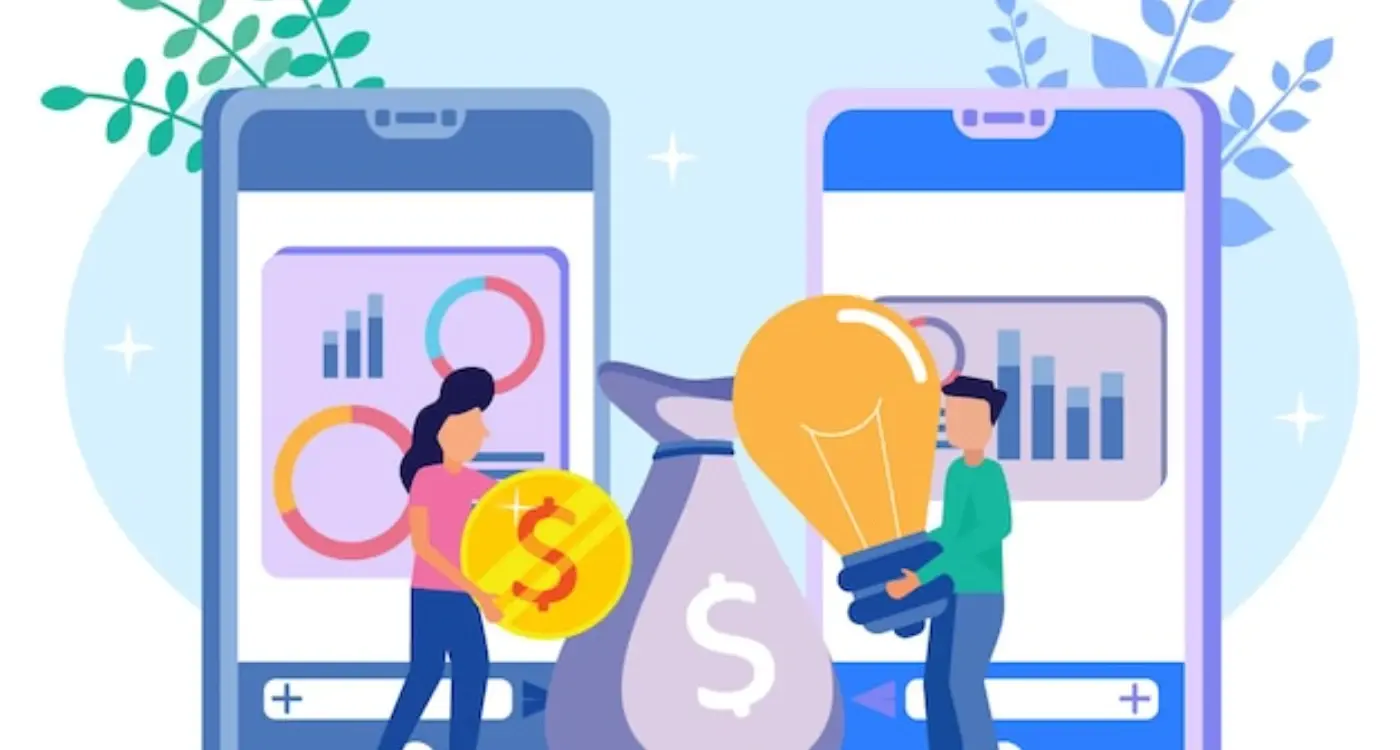What Timing Strategy Beats Competitors to Market Launch?
A successful mobile app launched one week early can capture up to 30% more market share than its closest competitor—timing really is everything in the app business. I've watched brilliant apps fail because they launched at exactly the wrong moment, and I've seen mediocre ones succeed simply because they got their timing spot on. It's honestly one of the most overlooked aspects of app development, yet it can make or break your entire project.
After building apps for nearly a decade, I can tell you that most founders obsess over features, design, and funding but barely think about when to actually release their app. They treat launch timing like an afterthought—pick a date, stick to it, and hope for the best. But here's the thing: your competitors aren't just sitting around waiting for you to finish. They're watching market trends, planning their own launches, and looking for the perfect window to steal your thunder.
The best time to launch an app is not when it's perfect, but when the market is ready and your competition isn't expecting it.
Market timing isn't just about avoiding other app launches; it's about understanding user behaviour, seasonal patterns, economic conditions, and industry trends. Should you rush to be first to market or wait and learn from early competitors' mistakes? Is December really a bad time to launch, or does it depend on your app category? These are the questions that separate successful launches from expensive failures. Getting your timing strategy right means you're not just competing on features—you're competing on intelligence.
Market timing isn't just about being first—it's about being right. After building apps for nearly a decade, I've seen brilliant ideas fail because they launched too early, and I've watched mediocre concepts succeed simply because they hit the market at exactly the right moment.
The fundamentals come down to three core elements: market readiness, user behaviour patterns, and competitive landscape. You can have the most polished app in the world, but if users aren't ready for what you're offering, you'll be fighting an uphill battle that's bloody expensive and frankly exhausting.
Reading the Market's Pulse
Market readiness means people actually want what you're building right now, not in six months or two years time. I've worked with clients who were convinced their app idea was "ahead of its time"—which is usually code for "the market doesn't want this yet". Being ahead of the curve sounds clever, but it's often a recipe for burning through your budget whilst waiting for everyone else to catch up.
User behaviour patterns are equally important. People don't just magically change how they do things because your app exists. They need a compelling reason to switch from whatever they're currently using—even if that's pen and paper or a complicated spreadsheet.
The Competition Factor
Here's the thing about competitive timing: you don't need to be first, you just need to be better positioned when the market is ready to adopt. Sometimes launching into a crowded market is actually easier than trying to create demand from scratch. At least you know people want the solution—you just need to convince them yours is worth switching to.
The sweet spot is finding that moment when demand is building but the current solutions aren't quite hitting the mark. That's when timing becomes your biggest competitive advantage.
Reading Market Signals and User Demand
I mean, you can have the most brilliant app idea in the world, but if you launch it when nobody's looking for that solution, you're going to struggle. Reading market signals isn't rocket science—it's about paying attention to what people are actually saying and doing, not what you think they should be doing.
The biggest mistake I see is people confusing their own excitement for market demand. Just because you and your mates think an app is a great idea doesn't mean the market is ready for it. You need to look at real indicators: search volume trends, competitor download numbers, social media conversations, and—here's a big one—whether people are currently paying for solutions in your space, even if they're clunky ones.
Google Trends is your best friend here; it shows you if interest in your apps core problem is growing, stable, or declining. But here's the thing—you want to dig deeper than just the obvious keywords. Look at related searches, seasonal patterns, and geographic variations. Sometimes the data tells you that your timing is perfect, but for a slightly different angle than you originally planned.
Set up Google Alerts for your key problem areas and competitor mentions. You'll start seeing patterns in news coverage, user complaints, and industry discussions that signal when the market is warming up to new solutions.
App store reviews of competing apps are pure gold for timing decisions. When you see hundreds of people complaining about the same missing feature or usability issue, that's your market signal right there. The demand exists, people are frustrated, and they're actively looking for better options. That's when you know the timing could be spot on for your launch.
Competitive Analysis for Launch Timing
Right, let's talk about something that keeps me busy when planning launches—watching what everyone else is doing. I mean, you can't just launch your app in a vacuum, can you? Your competitors timing decisions will directly impact how well your app performs, whether you like it or not.
The thing is, most people get this completely wrong. They either obsess over beating competitors to market (which can be a disaster if you rush) or they wait so long that the moment passes entirely. Both approaches miss the point really.
What I do is map out what's happening in the competitive landscape over the next 6-12 months. This isn't just about app releases—I'm looking at their marketing campaigns, major updates, funding announcements, and even their hiring patterns. You'd be surprised how much this tells you about their roadmap.
Key Competitor Intelligence to Track
- Major product updates and feature releases
- Marketing campaign schedules and budget allocation
- App store optimisation changes and keyword targeting
- PR announcements and media coverage timing
- User acquisition spending patterns
- Staff hiring in key departments
Here's what I've learned after watching hundreds of launches—there's usually a sweet spot between major competitor releases where you can grab attention. But here's the kicker; sometimes launching right after a competitor can work brilliantly if you've positioned yourself as the better alternative.
The biggest mistake? Changing your entire launch strategy because a competitor moved their date. Stick to your plan unless there's a genuinely compelling reason to shift. Your app's success shouldn't depend on avoiding the competition—it should depend on being better than them.
The Fast Follower vs First Mover Debate
Here's the thing about being first to market—it's not always the winning strategy people think it is. I've watched countless clients agonise over whether they should rush to launch before their competitors or wait and learn from others' mistakes. The truth? Both approaches can work brilliantly, but only if you understand when to use each one.
Being a first mover sounds exciting, doesn't it? You get to define the market, educate users, and establish your brand before anyone else shows up. But here's what I've seen happen more often than not; first movers spend enormous amounts of money and time teaching people why they need this new thing. They face technical challenges nobody's solved before, deal with unclear regulations, and often struggle to find the right business model. Instagram wasn't the first photo-sharing app—there were dozens before it.
The Fast Follower Advantage
Fast followers, on the other hand, get to watch the market develop. They see what works and what doesn't. They can avoid the expensive mistakes early players made and enter when user demand is already proven. Take WhatsApp—SMS was already established, other messaging apps existed, but they found a way to do it better at the right moment.
The key isn't being first or fast, it's being smart about timing and execution based on what your specific market needs
What really matters is understanding your market's maturity level. If you're entering a space where users don't understand the problem yet, being first might work if you have deep pockets for education. But if the market is warming up and competitors are making obvious mistakes? That's when fast following becomes your secret weapon. The choice depends on your resources, risk tolerance, and how well you understand your users' readiness to adopt something new.
Seasonal and Economic Timing Factors
Right, let's talk about timing your app launch around seasons and economic conditions—because honestly, getting this wrong can be the difference between a successful launch and watching your app disappear into the void. I've seen brilliant apps fail simply because they launched at Christmas when everyone's spending money on presents, not downloading new productivity apps.
Seasonal patterns are surprisingly predictable once you know what to look for. Gaming apps absolutely smash it during winter months when people are stuck indoors, while fitness and outdoor apps see their biggest uptake in January and spring. E-commerce apps? They need to be ready well before Black Friday, not launching during it. Actually, I've learned that launching 6-8 weeks before your peak season gives you time to iron out bugs and build momentum.
Economic Climate Considerations
Economic conditions affect app success more than most people realise. During tough economic times, free apps with optional premium features perform better than expensive upfront purchases. It's just common sense, really. People are more cautious with their money, so they want to try before they buy. But here's the thing—subscription apps for business productivity actually do well during recessions because companies are looking for ways to become more efficient.
The key is matching your monetisation strategy to the economic mood. When times are good, people spend freely on convenience and entertainment. When money's tight, they need clear value propositions and proof that your app will save them money or time. I always tell clients to have flexible pricing strategies ready because economic conditions can shift faster than your development timeline.
Technical Readiness vs Market Pressure
Here's where things get properly tricky—you're sitting there with an app that's maybe 80% ready, and you can practically hear your competitors footsteps getting closer. The temptation to launch early is massive, especially when you've got investors breathing down your neck or you've spotted a perfect market window opening up.
I've seen this scenario play out dozens of times, and honestly? There's no perfect answer. But there are some hard truths about what happens when you get this balance wrong. Launch too early with a buggy app, and you'll get hammered in reviews—those one-star ratings stick around forever, and they're bloody difficult to recover from. Launch too late, and someone else might grab your market share while you're still tweaking features.
Set a "minimum viable launch" standard before development starts. This means identifying the absolute core features your app needs to provide value, then adding a 20% buffer for unexpected issues.
When Market Pressure Wins
Sometimes you genuinely need to ship with less-than-perfect features. If there's a genuine first-mover advantage in your market or a seasonal opportunity that won't come again for months, it might be worth accepting some technical debt. But—and this is crucial—you need a rapid iteration plan ready to go.
When Technical Readiness Must Come First
For apps handling sensitive data, payments, or anything safety-related, technical readiness isn't negotiable. I've worked with fintech clients where rushing to market would have been catastrophic from both a regulatory and trust perspective. In these cases, being second to market with a rock-solid product beats being first with something unreliable.
The sweet spot? Launch when your core functionality works flawlessly, even if some nice-to-have features are still on the roadmap. Users will forgive missing features much more easily than they'll forgive crashes.
Building Buzz Before Launch
Right, here's where things get interesting—and where I see most apps get their timing completely wrong. Building buzz isn't about shouting into the void three weeks before launch; it's about creating genuine anticipation months ahead of time. I mean, you wouldn't throw a surprise party for yourself and expect everyone to show up, would you?
The biggest mistake I see is treating pre-launch marketing as an afterthought. You've spent months (or years) building your app, but then you give yourself two weeks to build an audience? That's mental, honestly. The apps that nail their launch timing start building their community way before they have anything to show.
The Pre-Launch Timeline That Actually Works
Based on what I've seen work consistently, here's how successful apps build momentum:
- 6 months before launch: Start your social presence and begin collecting email addresses with a simple landing page
- 4 months before: Share behind-the-scenes content, design mockups, and developer insights
- 2 months before: Launch beta testing with your most engaged followers
- 1 month before: Ramp up content creation, press outreach, and influencer partnerships
- Launch week: Execute your coordinated push across all channels
But here's the thing—you need to give people a reason to care before you give them a reason to download. Share your story, show your process, admit your struggles. People connect with authenticity, not polished marketing speak.
The apps that get this right don't just launch; they arrive with an audience already waiting. And that's the difference between hoping for downloads and knowing you'll get them. It's about building relationships before you need them, because once you launch, you're competing with every other app trying to grab attention that same week.
Measuring Launch Success and Timing Impact
Right, so you've launched your app—now what? This is where most founders make their biggest mistake. They look at download numbers for the first week and think they know everything about their timing decision. But honestly, measuring timing success is way more complex than that initial rush of downloads.
The downloads in your first month don't tell the whole story; you need to track retention rates, user engagement, and how long people actually stick around. I've seen apps get 50,000 downloads in week one then completely flatline because they launched at the wrong moment. Users downloaded it, tried it once, then forgot about it existed.
Key Metrics That Actually Matter
Your Day 1, Day 7, and Day 30 retention rates are much better indicators of whether your timing was spot on. If people are coming back repeatedly, you've likely hit the market at the right moment when they genuinely need your solution. Cost per acquisition matters too—if you launched when everyone else was fighting for attention, you'll see those numbers spike dramatically.
The best app launches feel inevitable rather than forced, like the market was just waiting for someone to solve this exact problem at this exact moment
Track your organic growth rate as well. When timing is right, word spreads naturally without you having to push so hard. Compare your metrics against industry benchmarks, but more importantly, look at how your competitors performed during their launch periods. Did they sustain growth or just get a brief spike? That tells you whether the market timing was genuinely good or if they just got lucky with a temporary trend that fizzled out quickly.
Getting your timing right can make or break your app launch—it's honestly that simple. I've seen brilliant apps fail because they launched too early, and I've watched mediocre ones succeed purely because they hit the market at exactly the right moment. The difference between success and failure often comes down to understanding that timing isn't just about being first; it's about being ready when your market is ready for you.
The most successful launches I've been part of happened when we stopped obsessing over what competitors were doing and started focusing on what users actually needed. Sure, keeping an eye on the competition is important, but your timing strategy should be driven by market demand, technical readiness, and your team's ability to execute properly. There's no point rushing to market if your app crashes every time someone opens it!
What really matters is finding that sweet spot where user demand meets your technical capabilities. Sometimes that means being the fast follower who learns from first mover mistakes. Other times it means having the courage to wait until you can deliver something genuinely better than what's already out there. The seasonal factors, economic conditions, and market signals we've discussed—they all play a part, but they're tools to inform your decision, not dictate it.
At the end of the day, the best timing strategy is the one that gives your app the best chance to solve real problems for real people. Focus on building something users actually want, launch when you can deliver on your promises, and be prepared to adapt quickly once you're in market. That's how you beat competitors—not by being first, but by being better when it counts.
Share this
Subscribe To Our Learning Centre
You May Also Like
These Related Guides

How Do You Price Your App Against the Competition?

Should I Choose A Competitive Or Niche Category For My App?



